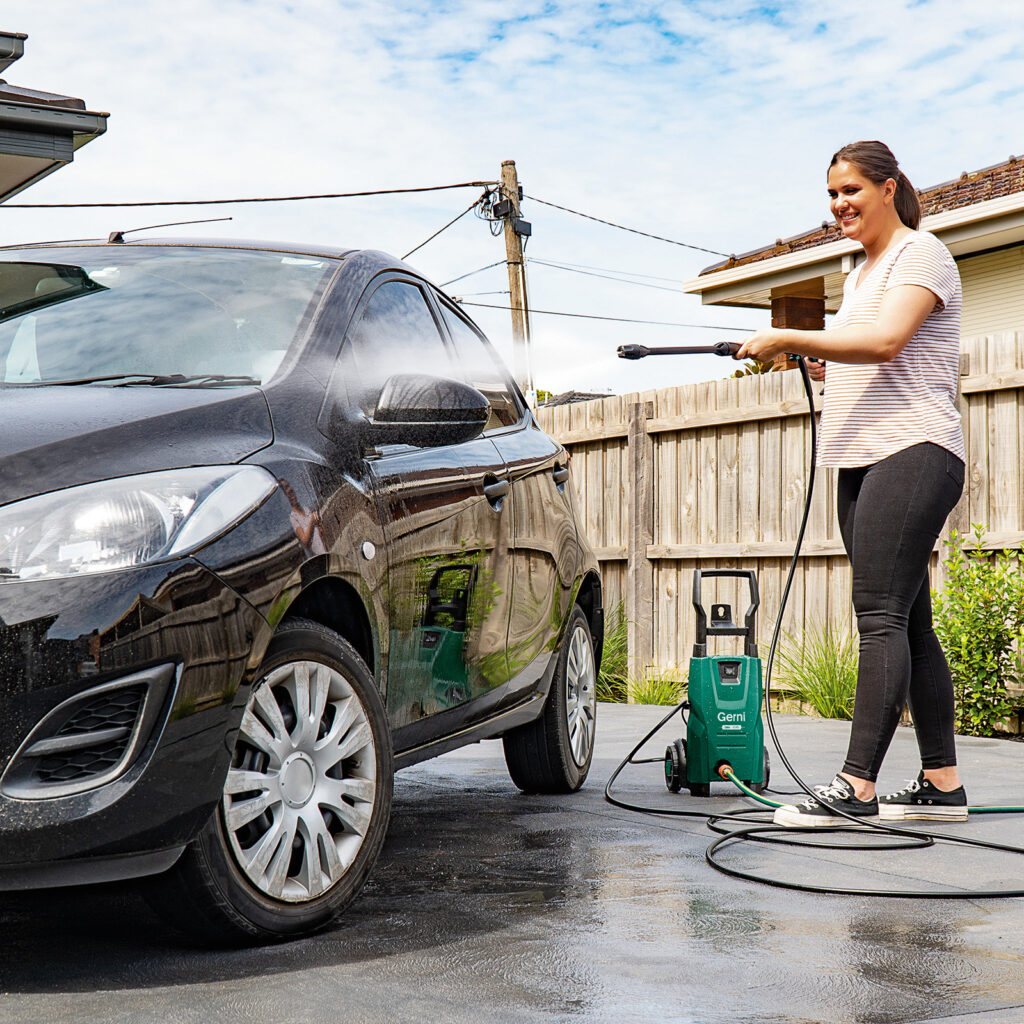In the realm of automotive care, high-pressure car washing machines have revolutionized the way vehicles are cleaned, offering efficiency, speed, and a level of cleanliness that traditional methods struggle to match. In this comprehensive exploration, we delve into the intricacies of car washing machine high pressure, shedding light on their functionality, benefits, and why they have become an indispensable tool in the car care industry.
The Dynamics of High-Pressure Car Washing Machines:
At its core, a high-pressure car washing machine is a marvel of engineering designed to deliver a focused, powerful stream of water to effectively remove dirt, grime, and contaminants from vehicle surfaces. Unlike traditional car washing methods, which often rely on manual scrubbing and hose rinsing, high-pressure washers utilize the force of pressurized water to dislodge and wash away even the most stubborn particles.
Benefits of High-Pressure Car Washing Machines:
The adoption of high-pressure car washing machines is fueled by a myriad of benefits that cater to both individual users and professional car wash facilities.
Firstly, the efficiency of high-pressure washers is unparalleled. The force of the water jet, combined with specialized nozzles, ensures that cleaning tasks are completed in a fraction of the time it would take with traditional methods. This time-saving advantage is particularly valuable in commercial settings where multiple vehicles need swift and effective cleaning.
Secondly, the high-pressure nature of these machines contributes to water conservation. By delivering a targeted and forceful stream, the need for excessive water usage is significantly reduced. This aligns with modern environmental concerns and regulations, making high-pressure car washing machines not just efficient but also environmentally responsible.
Key Features and Components of High-Pressure Car Washers:
To unravel the magic behind high-pressure car washing machines, it’s essential to understand their key components.
At the heart of these machines are high-pressure pumps and motors. These components work in tandem to pressurize the water, creating a potent cleaning force. The nozzles and spray guns, which come in various designs and sizes, play a crucial role in determining the intensity and spread of the water jet. Additionally, modern high-pressure car washers often feature pressure adjustment mechanisms, allowing users to tailor the force of the water according to the cleaning task at hand.
Types of High-Pressure Car Washing Machines:
High-pressure car washing machines come in diverse forms, catering to different needs and usage scenarios.
1. Portable High-Pressure Washers:
– Ideal for individual users.
– Compact and easy to move around.
– Suitable for home use, including cleaning vehicles, driveways, and outdoor surfaces.
2. Stationary High-Pressure Systems:
– Typically used in professional car wash facilities.
– Higher power and capacity compared to portable models.
– Suited for frequent and heavy-duty cleaning tasks.
3. Commercial-Grade High-Pressure Car Washers:
– Designed for industrial and commercial applications.
– High-powered and durable for continuous use.
– Commonly found in large-scale car wash facilities, fleet cleaning operations, and industrial settings.
Choosing the right type of high-pressure car washer depends on the intended use, frequency of use, and specific cleaning requirements.
How to Choose the Right High-Pressure Car Washer:
Selecting the most suitable high-pressure car washer involves considering several factors.
For residential users, a portable and compact model with sufficient power for car cleaning tasks may suffice. Key features to look for include ease of use, durability, and a range of nozzle options for different cleaning applications. In contrast, commercial-grade high-pressure car washers for professional use should be chosen based on factors such as power output, water flow rate, and the durability of components to withstand continuous operation.
Regular maintenance is also a crucial consideration. It’s essential to follow manufacturer guidelines for cleaning and upkeep to ensure optimal performance and longevity of the high-pressure car washing machine.
Best Practices for Using High-Pressure Car Washers:
While high-pressure car washers are efficient and effective, improper use can lead to unintended consequences, including damage to vehicle surfaces or injury. Adhering to best practices is essential for a safe and successful car washing experience.
1. Correct Nozzle Selection:
– Different cleaning tasks require different nozzle types.
– Wide-angle nozzles for general cleaning and narrow-angle nozzles for stubborn stains.
– Understanding the nozzle color-coding system for pressure levels.
2. Safe Distance and Angles:
– Maintaining an appropriate distance from the vehicle during operation.
– Avoiding overly acute angles to prevent damage to paint and surfaces.
– Understanding the impact of distance and angles on cleaning effectiveness.
3. Avoiding Damage to Vehicle Surfaces:
– Using the appropriate pressure settings for different vehicle surfaces.
– Being mindful of sensitive areas such as windows, mirrors, and paint.
– Testing the pressure on a small, inconspicuous area before full-scale use.
Adhering to these best practices ensures that the advantages of high-pressure car washing machines are harnessed without compromising the integrity of the vehicle or risking safety.
Comparative Analysis: High-Pressure vs. Traditional Car Washing Methods:
To truly appreciate the prowess of high-pressure car washing machines, it’s valuable to compare them with traditional car washing methods.
1. Efficiency and Time Savings:
– High-pressure car washers significantly reduce cleaning time.
– Traditional methods involving manual scrubbing and rinsing are time-consuming.
– High-pressure machines are particularly advantageous in commercial settings with high vehicle turnover.
2. Water Usage Comparisons:
– Traditional methods often involve continuous water flow from a hose.
– High-pressure car washers use targeted pressure, minimizing water wastage.
– The environmental impact of water conservation is a key advantage of high-pressure systems.
3. Impact on Cleaning Effectiveness:
– High-pressure car washers excel in removing dirt, grime, and contaminants.
– Traditional methods may require additional effort for thorough cleaning.
– The forceful water jet of high-pressure machines proves superior in achieving a spotless finish.
While traditional methods may have their place, the efficiency, speed, and environmental considerations make high-pressure car washing machines a compelling choice for modern car care.
Maintenance and Troubleshooting Tips for High-Pressure Car Washers:
The longevity and performance of high-pressure car washers hinge on proper maintenance and timely troubleshooting.
1. Regular Cleaning and Inspection:
– Removing debris and sediment from nozzles and filters.
– Checking hoses and connections for leaks.
– Inspecting pump and motor components for wear and tear.
2. Common Issues and Solutions:
– Loss of pressure: Checking for clogs or blockages.
– Water leakage: Inspecting hoses and connections for damage.
– Unusual noises: Identifying and addressing issues with the pump or motor.
3. Importance of Following Manufacturer Guidelines:
– Adhering to recommended maintenance schedules.
– Using compatible cleaning agents and detergents.
– Consulting the user manual for troubleshooting guidance.
By incorporating these maintenance practices, users can ensure the optimal performance and longevity of their high-pressure car washing machines, safeguarding their investment in this advanced cleaning technology.
Innovations in High-Pressure Car Washing Technology:
The landscape of high-pressure car washing technology is continually evolving, with innovations that enhance functionality, user experience, and sustainability.
1. Integration with Smart Technology:
– Remote control and monitoring capabilities through mobile apps.
– Customizable cleaning presets for different vehicle types.
– Connectivity with other smart devices for seamless operation.
2. Adjustable Pressure Settings for Different Cleaning Tasks:
– Fine-tuning pressure levels for specific cleaning requirements.
– Preset modes for delicate surfaces and intense cleaning tasks.
– Enhancing user control and versatility.
3. Eco-Friendly Features and Energy Efficiency:
– Incorporation of energy-efficient motors and pumps.
– Use of eco-friendly materials in manufacturing.
– Integration of features such as automatic shut-off to conserve energy.
These innovations not only elevate the user experience but also contribute to the industry’s commitment to sustainability and efficiency.
Safety Considerations in Using High-Pressure Car Washers:
While high-pressure car washing machines are powerful tools, their use requires a keen focus on safety to prevent injuries and damage.
1. Proper Use of Personal Protective Equipment:
– Wearing safety goggles to protect eyes from splashing water and debris.
– Using gloves to shield hands from the force of the water jet.
– Wearing appropriate footwear to prevent slips and falls.
2. Guidelines for Avoiding Injuries:
– Educating users on safe operating distances.
– Providing clear instructions on nozzle angles to prevent rebound.
– Emphasizing the importance of focusing the water jet away from the body.
3. Ensuring the Safety of Bystanders and Pets:
– Erecting barriers or signage to delineate the work area.
– Ensuring bystanders, including pets, are at a safe distance during operation.
– Communicating potential risks to those in the vicinity.
Prioritizing safety considerations not only prevents accidents but also ensures that the use of high-pressure car washers remains a secure and reliable means of vehicle cleaning.
DIY Car Washing with High-Pressure Machines:
For enthusiasts and conscientious vehicle owners, utilizing high-pressure car washing machines for at-home cleaning is an enticing option.
1. Tips for Effective At-Home Car Washing:
– Starting with a pre-rinse to remove loose dirt.
– Using appropriate nozzle attachments for different surfaces.
– Employing a systematic approach to ensure thorough cleaning.
2. Necessary Precautions for Beginners:
– Reading and understanding the user manual before operation.
– Testing pressure settings on a small area before full-scale cleaning.
– Being mindful of nozzle angles and distances to prevent damage.
3. Choosing the Right Detergent and Cleaning Agents:
– Opting for cleaning agents recommended by the manufacturer.
– Ensuring compatibility with the high-pressure car washer.
– Diluting detergents according to guidelines to avoid damage to surfaces.
By following these tips and precautions, DIY car washing with high-pressure machines becomes an accessible and rewarding experience, contributing to the maintenance and longevity of the vehicle.
Commercial Applications of High-Pressure Car Washing Machines:
The utility of high-pressure car washing machines extends far beyond individual and residential use, finding a significant presence in commercial and industrial applications.
1. Use in Professional Car Wash Facilities:
– High-speed and efficient cleaning for a large volume of vehicles.
– Consistent and thorough results for customer satisfaction.
– Integration into automated car wash systems for streamlined operations.
2. Fleet Cleaning for Businesses:
– Ideal for businesses with a fleet of vehicles.
– Time-efficient cleaning of multiple vehicles in a commercial setting.
– Cost-effective maintenance of company vehicles.
3. Industrial Applications Beyond Vehicle Cleaning:
– Utilization in various industrial settings for equipment and machinery cleaning.
– Removal of contaminants and debris from manufacturing equipment.
– Versatility in addressing cleaning needs across diverse industries.
The adaptability and power of high-pressure car washing machines make them indispensable tools in professional settings, contributing to operational efficiency and maintaining the aesthetics of vehicles and equipment.
Environmental Impact of High-Pressure Car Washing:
In the era of heightened environmental awareness, the environmental impact of car washing methods is a significant consideration. High-pressure car washing machines, with their water-conserving features and targeted cleaning capabilities, align with sustainability goals.
1. Water Conservation Measures:
– Reduced water consumption compared to traditional car washing.
– The focused stream of water minimizes runoff and wastage.
– Integration of water recycling systems in some models for further conservation.
2. Eco-Friendly Cleaning Agents:
– The industry trend towards using biodegradable and environmentally friendly detergents.
– Minimizing the use of harmful chemicals to prevent soil and water contamination.
– Aligning with regulatory standards for sustainable practices.
3. Compliance with Environmental Regulations:
– Adherence to regulations regarding water usage and chemical disposal.
– Proactive measures to exceed regulatory requirements for environmental sustainability.
– Participation in eco-certification programs to showcase commitment to green practices.
High-pressure car washing machines, when employed with eco-conscious choices, contribute significantly to the overall reduction of the environmental footprint associated with vehicle cleaning.
Conclusion:
In conclusion, understanding high-pressure car washing machines unveils a world of efficiency, power, and environmental responsibility. From their key components and benefits to best practices, maintenance tips, and the future of the technology, high-pressure car washers have emerged as transformative tools in the automotive care landscape. Whether used for DIY car washing at home or as commercial-grade systems in professional settings, the impact of these machines extends beyond mere cleanliness—they represent a commitment to efficiency, sustainability, and innovation. The car wash machine resonates throughout this exploration, emphasizing the pivotal role these high-pressure systems play in the ongoing evolution of vehicle cleaning practices. As we embrace the future of automotive care, high-pressure car washing machines stand as a testament to the industry’s dedication to excellence and environmental stewardship.



